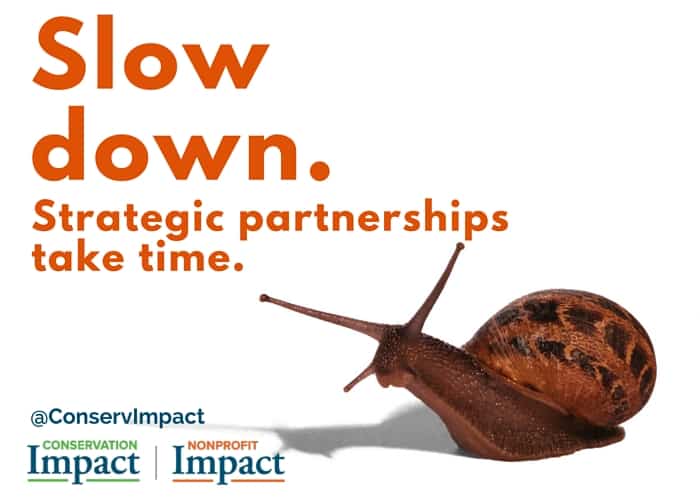
What Strategic Partnership Really Takes
More and more organizations and agencies are seeking new ways to work collaboratively. Whether in response to decreasing resources or as a way to make a bigger mission-related impact together, partnership is on everyone’s mind.
But not all partnerships are created equal.
When a partnership is such that your success on a particular project or efforts depends on another organization – you are in a special kind of partner relationship called a strategic partnership. A strategic partnership is one in which partners share common a strategic goal and develop an explicit agreement outlining how they will work together to accomplish that shared goal.
How do you get started?
Invest first. Influence later.
When developing a strategic partnership, there’s no time to rush. It can be helpful to think about this type of partnership as a marriage (or at least shacking up!). You don’t go straight from your first date to the altar; and you don’t go from discovering you have strategic goals in common to operating as fully-functioning strategic partners.
Invest the time up front to get to know your potential strategic partner before formalizing the partnership with a written agreement. How do they make decisions? What most gets in their way of being productive? What’s their dominate work style and organizational culture and how will it mesh with yours? For some good questions to help really get to know your potential partner – click here.
Think long-term. Go deep.
A strategic partnership agreement usually defines how you and your partner will work towards a specific project or goal. This might imply that the partnership has a shelf life (and it might!). But if you’re going through the process of developing a formal agreement, why not think long-term?
In “From Collaborative Advantage: the Art of Alliances,” in Harvard Business Review, Rosabeth Moss Kanter outlines the five levels of integration she observes in truly successful strategic partnerships:
- Strategic integration: ensuring continuous contact among top leaders to discuss broad goals or changes
- Tactical integration: bringing together middle managers to develop plans for specific projects and to identify beneficial organization or system changes
- Operational integration: ensuring that those who carry out the day-to-day work of the collaborative effort have timely access to the information and resources they need to accomplish their assigned tasks
- Interpersonal integration: making sure people get to know one another personally – a critical foundation upon which to build
- Cultural integration: learning about each other’s culture and building the communication skills needed to bridge cultural differences
That’s a pretty tall order, isn’t it? But that’s what it takes to create a strategic partnership relationship that delivers big results.
Keep the long view in mind as you craft partnership agreements. What’s your end game, that long-term vision of what you hope to accomplish in the name of your mission? What role does this partnership play in that vision? Thinking long-term will help you to slow down, take your time, and pay attention to all five levels of integration.

